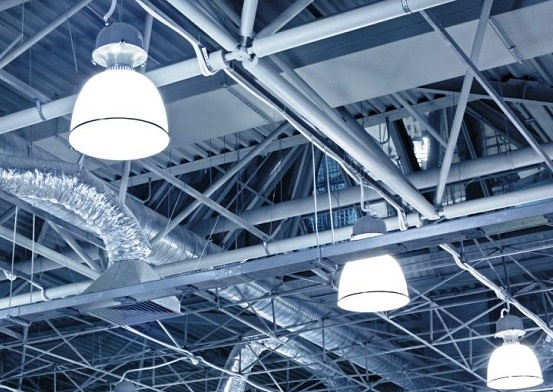M&E
Contents |
[edit] What does M&E mean in the construction industry?
In the construction industry, the term 'M&E' means 'mechanical and electrical'. It may be used to refer to mechanical and electrical systems, or mechanical and electrical engineers, mechanical and electrical drawings and so on.
[edit] What are mechanical and electrical systems?
Mechanical systems can include elements of infrastructure, plant and machinery, tool and components, heating and ventilation and so on.
For more information see: Mechanical engineer.
Electrical systems might include, power supply and distribution, telecommunications, computing instrumentation, control systems and so on.
For more information see: Electrical engineer.
Clearly there is a great deal of overlap, with many systems including both mechanical and electrical components, hence the term M&E.
[edit] What qualifications do M&E engineers have?
There are both mechanical and electrical engineering professionals who specialise in M&E. M&E engineers will often hold a degree in mechanical, electrical or M&E engineering. There are also combined mechanical and electrical engineering courses are available, with joint accreditation between the Engineering Council, Institution of Engineering and Technology (IET) and Institution of Mechanical Engineers. Chartered Engineer status can be awarded through the Chartered Institution of Building Services Engineers.
There are a large number of specialist M&E subcontractors and suppliers, and many of the bigger main contractors will have their own M&E divisions. A great deal of integration and co-ordination is required and designs are often a collaboration between consultants, contractors and specialists. This can cause problems where there are a number of separate disciplines, packages and suppliers, with no one party taking overall responsibility for co-ordination.
[edit] What is the difference between M&E and building services?
The terms 'M&E' and 'M&E engineer' are often taken as interchangeable with the terms 'building services'/ 'building services engineer'.
Building services are the systems installed in buildings to make them comfortable, functional, efficient and safe and might include:
- Building control systems.
- Energy distribution.
- Energy supply (gas, electricity and renewable sources such as solar, wind, geothermal and biomass).
- Escalators and lifts.
- Facade engineering (such as building shading requirements).
- Fire safety, detection and protection.
- Heating, ventilation and air conditioning (HVAC).
- Information and communications technology (ICT) networks.
- Lighting (natural and artificial).
- Lightning protection.
- Refrigeration.
- Security and alarm systems.
- Water, drainage and plumbing (including sustainable urban drainage systems (SUDS)).
- Carbon emissions calculations and reduction.
However, mechanical and electrical engineering can be a wider field than this, including areas beyond building design and construction, such as; large-scale power generation and transmission, transportation systems, infrastructure controls, industrial installations and so on.
For more information see: Building services engineer.
[edit] Related articles on Designing Buildings
- Air conditioning.
- Air handling unit.
- BSRIA.
- Building engineering physics.
- Building services.
- Building services engineer.
- CIBSE.
- Electrical engineer.
- Engineer.
- Institution of Mechanical Engineers.
- Mechanical engineer.
[edit] External references
Featured articles and news
RTPI leader to become new CIOB Chief Executive Officer
Dr Victoria Hills MRTPI, FICE to take over after Caroline Gumble’s departure.
Social and affordable housing, a long term plan for delivery
The “Delivering a Decade of Renewal for Social and Affordable Housing” strategy sets out future path.
A change to adoptive architecture
Effects of global weather warming on architectural detailing, material choice and human interaction.
The proposed publicly owned and backed subsidiary of Homes England, to facilitate new homes.
How big is the problem and what can we do to mitigate the effects?
Overheating guidance and tools for building designers
A number of cool guides to help with the heat.
The UK's Modern Industrial Strategy: A 10 year plan
Previous consultation criticism, current key elements and general support with some persisting reservations.
Building Safety Regulator reforms
New roles, new staff and a new fast track service pave the way for a single construction regulator.
Architectural Technologist CPDs and Communications
CIAT CPD… and how you can do it!
Cooling centres and cool spaces
Managing extreme heat in cities by directing the public to places for heat stress relief and water sources.
Winter gardens: A brief history and warm variations
Extending the season with glass in different forms and terms.
Restoring Great Yarmouth's Winter Gardens
Transforming one of the least sustainable constructions imaginable.
Construction Skills Mission Board launch sector drive
Newly formed government and industry collaboration set strategy for recruiting an additional 100,000 construction workers a year.
New Architects Code comes into effect in September 2025
ARB Architects Code of Conduct and Practice available with ongoing consultation regarding guidance.
Welsh Skills Body (Medr) launches ambitious plan
The new skills body brings together funding and regulation of tertiary education and research for the devolved nation.
Paul Gandy FCIOB announced as next CIOB President
Former Tilbury Douglas CEO takes helm.
UK Infrastructure: A 10 Year Strategy. In brief with reactions
With the National Infrastructure and Service Transformation Authority (NISTA).
























Comments
[edit] To make a comment about this article, click 'Add a comment' above. Separate your comments from any existing comments by inserting a horizontal line.
Really helpful explanation thanks.